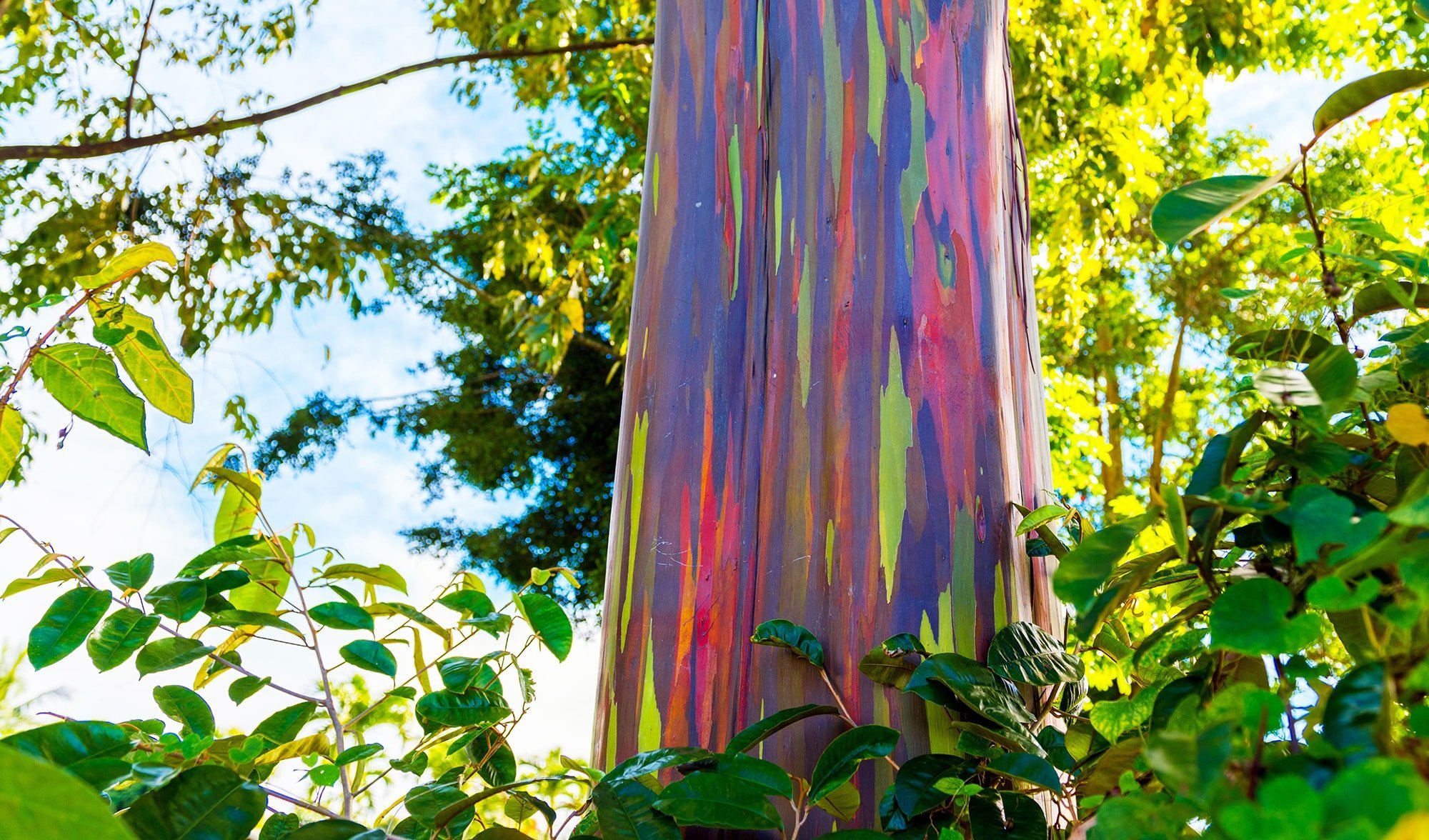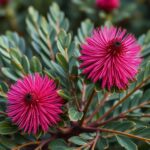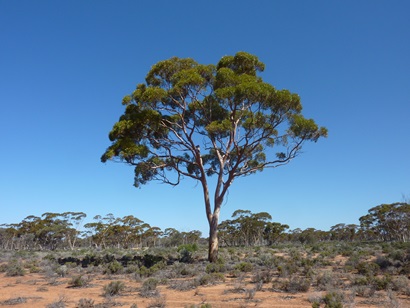Exploring the Beauty and Diversity of Rainbow Eucalyptus in Australia: A Comprehensive Guide

The Rainbow Eucalyptus, known for its vibrant, multicolored bark, stands as a stunning testament to nature's artistry in Australia. This unique tree, native to the Philippines but thriving in various Australian climates, captivates visitors with its striking appearance and ecological significance. In this comprehensive guide, we will explore the beauty and diversity of the Rainbow Eucalyptus, detailing its growth habits, environmental role, and the best locations to appreciate its splendor. From its eye-catching colors to its cultural significance, the Rainbow Eucalyptus offers a fascinating glimpse into Australia's rich botanical heritage and invites nature lovers to delve deeper into its wonders.
The Splendor of Rainbow Eucalyptus in Australia
The rainbow eucalyptus (Eucalyptus deglupta) is a stunning tree native to Indonesia and the Philippines, but it has found a unique place in Australia's lush landscapes. Renowned for its striking multicolored bark, which peels away in strips to reveal a vibrant layering of greens, blues, purples, and browns, this tree thrives particularly in tropical and subtropical climates. In Australia, it can be found in botanical gardens and parks where conditions mimic its native environment. Its remarkable appearance and rapid growth have made it a popular choice for ornamental planting, enchanting visitors and locals alike with its vivid colors and dynamic beauty.
Habitat and Distribution
Rainbow eucalyptus primarily thrives in tropical and subtropical regions. In Australia, it is often found in parts of Northern Queensland due to the favorable warm and wet climate. The tree prefers areas near water sources and commonly grows in riverbanks and marshy areas where the soil is consistently moist. Its adaptation to various soil types, alongside its resistance to drought, helps it flourish outside its traditional range.
Growth Characteristics
This tree can grow up to 60 meters (approximately 200 feet) tall, with a trunk diameter that can reach around 2 meters (6.5 feet). The rapid growth rate of rainbow eucalyptus makes it an appealing choice for landscaping, as it can quickly provide shade and aesthetic value. Its canopy is wide and dense, providing a habitat for various bird species and insects, while the tree itself is also known for its ability to tolerate occasional drought conditions once established.
Cultural Significance
Rainbow eucalyptus holds a special place in various cultures, representing beauty and resilience. In Australian Indigenous cultures, eucalyptus trees are often revered entities, symbolizing nurturing and protection. Additionally, its stunning visual appeal has made it a popular subject in art and photography, symbolizing the natural beauty of the Australian landscape, while also serving as a testament to the rich biodiversity found within the region.
Ecological Impact
As a non-native species in parts of Australia, rainbow eucalyptus can sometimes pose challenges to local ecosystems. While it provides habitat and contributes to biodiversity, its rapid growth may result in competition with indigenous flora, affecting local plant communities. This duality illustrates the need for effective management strategies to balance the ornamental appeal with ecological integrity, ensuring that native species are not adversely impacted by its introduction.
Conservation and Preservation
Efforts to preserve and protect rainbow eucalyptus in Australia largely focus on its role in botanical gardens and arboretums. Many of these institutions aim to educate the public about the importance of maintaining biodiversity, including both native and non-native species. Conservation practices may include controlled cultivation and monitoring of populations to ensure that their presence enhances the surrounding ecosystems rather than disrupts them.
| Aspect | Detail |
|---|---|
| Native Regions | Indonesia, Philippines |
| Height | Up to 60 meters |
| Habitat | Tropical and subtropical areas |
| Color | Multicolored bark: Green, blue, purple, brown |
| Growth Rate | Rapid growth |
Do rainbow eucalyptus grow in Australia?

Yes, rainbow eucalyptus (Eucalyptus deglupta) can grow in Australia, but it is essential to note that this species is primarily native to tropical rainforests in the Philippines, Indonesia, and Papua New Guinea. Rainbow eucalyptus is recognized for its stunning, multicolored bark that peels away in strips, revealing a vibrant green inner layer that matures into various shades of blue, purple, orange, and maroon. While it is not an indigenous species to Australia, it can thrive in certain regions under appropriate conditions.
Native Range of Rainbow Eucalyptus
The native range of rainbow eucalyptus encompasses the tropical regions of Southeast Asia and some Pacific Islands. Its adaptation to warm and humid climates makes it flourish best in these environments. In Australia, the climate varies significantly from the tropical areas where it thrives, so while it is possible to grow rainbow eucalyptus in certain regions, care must be taken regarding the local climate.
- Rainbow eucalyptus is native to tropical Indonesia and the Philippines.
- It is adapted to warm and moist environments.
- Australia's diverse climate can support its growth in specific regions.
Suitable Environments for Growing Rainbow Eucalyptus in Australia
In Australia, rainbow eucalyptus is best suited for tropical and subtropical areas, where temperatures remain consistently warm. It prefers areas with well-drained soil and can tolerate some salinity, but it does not thrive in very dry or cold conditions. Planting in regions such as northern Queensland can lead to successful growth.
- Warm tropical and subtropical climates are ideal for growth.
- Well-drained soil and ample moisture are crucial.
- Regions such as northern Queensland are particularly suited for its cultivation.
Care Requirements for Rainbow Eucalyptus
To cultivate rainbow eucalyptus in Australia, specific care requirements must be adhered to, ensuring optimal growth and maintenance. This includes regular watering, particularly during dry spells, and occasional fertilization to promote strong, healthy growth. Proper pruning can help to enhance its shape and vibrant bark color.
- Regular watering is essential, especially in dry periods.
- Fertilization should be done to enhance growth.
- Pruning helps maintain its shape and vibrant bark.
Potential Challenges in Cultivating Rainbow Eucalyptus
Cultivating rainbow eucalyptus in Australia may pose some challenges due to regional climate differences and pest issues. It may be susceptible to certain pests native to Australia, and extreme weather events like frost can damage the tree. Additionally, plant diseases may affect the health of the tree if not correctly addressed.
- Regional climate differences can hinder growth.
- Pest susceptibility may lead to challenges in maintenance.
- Frost can cause significant damage to the leaves and bark.
Benefits of Growing Rainbow Eucalyptus in Australia
Despite the challenges, there are numerous benefits to growing rainbow eucalyptus in Australia. Its striking appearance makes it an attractive ornamental tree for gardens and landscapes, providing aesthetic value. It can also contribute to biodiversity and create habitats for various wildlife species.
See also:
- Offers aesthetic value with its unique, colorful bark.
- Enhances biodiversity by supporting local wildlife.
- Can be a conversation starter and adds exotic appeal to properties.
Are there Eucalyptus trees in Australia?
Yes, there are Eucalyptus trees in Australia. In fact, Australia is the native home of the Eucalyptus genus, which comprises over 700 species. These trees are characterized by their distinctively aromatic leaves and are an integral part of the Australian landscape. Eucalyptus trees thrive in various climatic conditions across Australia, from coastal regions to arid interior environments, contributing significantly to the country's biodiversity.
Eucalyptus Species in Australia
Eucalyptus is a vast genus with many species native to Australia. Among them, some of the most common include:
- Eucalyptus globulus (Blue Gum)
- Eucalyptus regnans (Mountain Ash)
- Eucalyptus camaldulensis (River Red Gum)
These species vary in size, growth habits, and ecological niches, making them vital to Australian ecosystems.
Ecological Significance
Eucalyptus trees play a crucial role in the Australian ecosystem. They provide habitat and food for numerous species of wildlife, including:
- Cockatoos and other bird species that feed on their seeds.
- Kangaroos and other herbivores that browse on their leaves.
- Koalas, which primarily consume eucalyptus leaves.
This biodiversity support is essential for maintaining ecological balance.
Economic Importance
The economic significance of Eucalyptus trees extends beyond their ecological roles. They are utilized in various industries, such as:
- Timber Production: Eucalyptus wood is known for its durability and strength.
- Essential Oils: The leaves are harvested for their aromatic oil, used in medicinal and cosmetic products.
- Pulp and Paper: Eucalyptus wood is a primary source for pulp due to its rapid growth.
These applications highlight the value of eucalyptus in both local and global markets.
Cultural Significance
Eucalyptus trees hold a significant place in Australian culture and identity. They are often depicted in art, literature, and:
- Indigenous Traditions: Eucalyptus is integral to Aboriginal culture, used for various medicinal purposes.
- National Symbols: Certain species are recognized as symbols of Australia.
- Tourism: Eucalyptus forests attract tourists for their beauty and unique ecosystems.
Their presence is intertwined with the Australian way of life.
Conservation Efforts
As vital as they are, some species of Eucalyptus face threats from climate change and habitat destruction. Conservation efforts include:
- Restoration Projects: Initiatives aimed at replanting and rehabilitating eucalyptus habitats.
- Research and Monitoring: Studies conducted to understand the effects of climate change on eucalyptus species.
- Community Involvement: Local groups engage in conservation activities to protect these valuable trees.
Such efforts are crucial to ensure the survival of eucalyptus species in their native environments.
Which countries have rainbow eucalyptus trees?

Rainbow eucalyptus trees, known scientifically as Eucalyptus deglupta, are native to the tropical regions of the Philippines, Indonesia, and parts of Papua New Guinea. However, they have also been successfully cultivated in various countries around the world due to their striking appearance and fast growth. Below is an overview of the countries where these vibrant trees can be found.
See also:
Countries of Origin
The rainbow eucalyptus is primarily found in its native habitats, which include:
- Philippines - Especially on the islands of Mindanao and Luzon.
- Indonesia - Commonly found in the Maluku Islands.
- Papua New Guinea - Thriving in the tropical rainforests.
United States
In the United States, rainbow eucalyptus trees are primarily grown in states with suitable tropical and subtropical climates, such as:
- Hawaii - The trees are quite popular in lush landscapes.
- California - Found in Southern California, particularly in botanical gardens and parks.
- Florida - Adapted well to various environments in the state.
Australia
While the rainbow eucalyptus is not native to Australia, it can be found in several botanical gardens across the country. Notable locations include:
- Royal Botanic Garden, Sydney - Hosts various specimens for visitors to enjoy.
- Melbourne Gardens - Features these vibrant trees in their diverse collection.
- Botanic Gardens in Cairns - Successfully cultivating rainbow eucalyptus in a suitable environment.
Mexico
In Mexico, rainbow eucalyptus trees are often planted for ornamental purposes. They are commonly seen in:
- Veracruz - The humid climate supports their growth.
- Mexico City - Found in parks and green spaces.
- Oaxaca - Planted in several public gardens.
Various Tropical Regions
Beyond the primary countries mentioned, rainbow eucalyptus trees are also cultivated in various tropical areas around the globe, including:
- Brazil - Particularly in botanical gardens and nature reserves.
- Thailand - Commonly used in parks and landscaped areas.
- Puerto Rico - Grown for their aesthetic value in local environments.
Where is the best place to see rainbow eucalyptus?
:strip_icc()/Rainbow-Trees2-3c41e09f3cfa49ada3a7309499509568.jpg)
The best place to see rainbow eucalyptus (Eucalyptus deglupta), famous for its stunning multicolored bark, is primarily found in tropical regions. Here are some of the most notable locations:
1. Maui, Hawaii
Maui is one of the most popular destinations to see rainbow eucalyptus. Along the famous Road to Hana, visitors can encounter these trees in various locations. The vibrant colors and unique peeling bark create an extraordinary sight.
- Visit the Kahului area for easier access.
- Stop at Haleakalā National Park where they thrive.
- Take scenic drives to see these trees along the coast.
2. Mindanao, Philippines
In the Philippines, particularly on the island of Mindanao, you can find extensive plantations of rainbow eucalyptus. The humid climate favors their growth, making them a common sight in certain regions.
- Seek out Bukidnon for vast forests.
- Explore the Philippine Paninsula, where they are abundant.
- Visit local parks like Eucalyptus Park to see them up close.
3. The Big Island of Hawaii
The Big Island also hosts rainbow eucalyptus, particularly in areas like Hilo and along the Hamukua Coast. Their unique appearance against the lush tropical backdrop makes it a photographer's dream.
- Explore Akaka Falls State Park for natural beauty.
- Visit Hakalau Forest National Wildlife Refuge for birdwatching and trees alike.
- Drive through scenic routes to encounter vibrant groves.
4. Madagascar
Madagascar is the native habitat of the rainbow eucalyptus. While less accessible to travelers, it remains a key location for those seeking to see these trees in their original environment.
- Discover the Andasibe-Mantadia National Park.
- Visit the isolated Tsaratanana Massif for a unique ecosystem.
- Learn about local conservation efforts to protect this species.
5. Southern California, USA
In the continental United States, southern California showcases rainbow eucalyptus in numerous parks and botanical gardens. While not their native habitat, their presence has become a delightful addition to the region’s landscape.
- Visit the Los Angeles County Arboretum and Botanic Garden.
- Check out the rainbow eucalyptus at Santa Barbara Botanic Garden.
- Explore local parks that emphasize native plant landscaping alongside these vibrant trees.
Questions from Our Readers
What is the rainbow eucalyptus?
The rainbow eucalyptus, known scientifically as Eucalyptus deglupta, is a species of tree native to the Philippines, Indonesia, and Papua New Guinea but has become popular in other regions, including Australia. This tree is famous for its striking multicolored bark that peels away in strips, revealing a vibrant range of colors that include green, blue, purple, and orange.
Where can I find rainbow eucalyptus in Australia?
In Australia, the rainbow eucalyptus can be found in various botanical gardens and arboretums, particularly in locations with a subtropical climate. Although it is not native to the country, it is often planted in parks and gardens across states like Queensland, where the climate supports its growth, allowing visitors to enjoy its spectacular appearance.
See also:
How fast does rainbow eucalyptus grow?
Rainbow eucalyptus trees are known for their rapid growth rate, which can reach up to 3 feet per year under optimal conditions. They can attain heights of 100 to 250 feet, depending on the environment, making them one of the tallest eucalyptus species when fully mature, particularly in favorable Australian climates.
Can rainbow eucalyptus be grown in residential gardens?
Yes, rainbow eucalyptus can be grown in residential gardens, but it is important to consider their size and growth requirements. They thrive in well-drained soils and need ample sun exposure; however, potential gardeners should be aware that they may need significant space due to their height and spread as they mature.

If you want to read more articles like Exploring the Beauty and Diversity of Rainbow Eucalyptus in Australia: A Comprehensive Guide, we recommend you check out our Landscaping category.
Leave a Reply

Related Articles